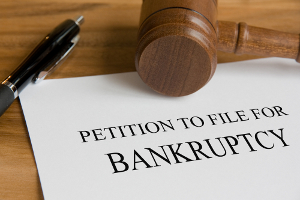 In bankruptcy the debtor is the person filing the bankruptcy case. When the case is filed by an individual then there is a single debtor in the bankruptcy case. When the debtor files together with his spouse then the spouse is the joint debtor.
In bankruptcy the debtor is the person filing the bankruptcy case. When the case is filed by an individual then there is a single debtor in the bankruptcy case. When the debtor files together with his spouse then the spouse is the joint debtor.
A co-debtor is someone who is liable for a debt also owed by the debtor in a bankruptcy case. The co-debtor is not a party to the bankruptcy case. They simply share liability for a debt that is also owed by a party in the bankruptcy case. A co-debtor could be a business partner or someone who cosigned a debt. Co-debtors can also be a non-filing spouse. For example, suppose a man decides to file bankruptcy but his wife does not want to file bankruptcy. However, she is liable for the debts listed in the bankruptcy. In this case the wife is a co-debtor but not a joint debtor.
Co-debtors enjoy protection in Chapter 13 bankruptcy cases even though they didn’t file bankruptcy. The automatic stay prevents collection against a co-debtor during the pendency of the bankruptcy case. This means that even though the co-debtor isn’t in bankruptcy they are still protected from collection efforts, such as repossession of vehicles, foreclosure of a house, and lawsuits for debts listed in the bankruptcy case.
Creditors can lift the stay against co-debtors with permission from the court. The most common situation where a court lifts the stay against a co-debtor is when a bankruptcy debtor isn’t making payments to a mortgage company for a home and the mortgage company files a motion to lift the automatic stay against the debtor and the co-debtor so that they can pursue foreclosure of the property. Once the stay is lifted the mortgage company can seize the property, pursuant to state law limitations.
For more information about filing bankruptcy contact a Frisco TX bankruptcy lawyer.